Features
Impressive UK debut
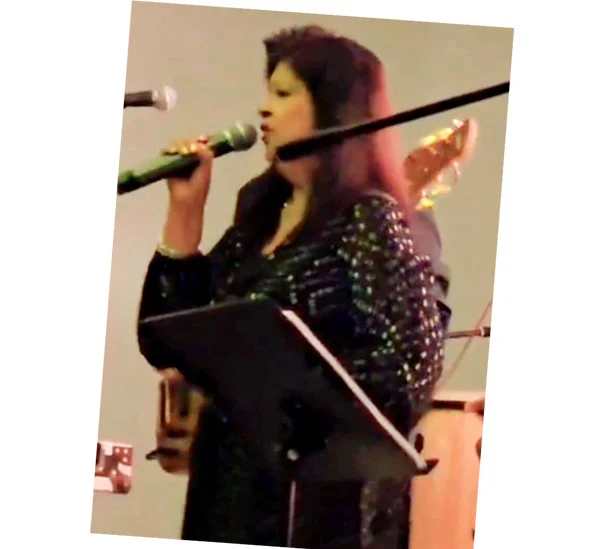
She is, indeed, a legendary star, and Lankika Perera’s very first performance in the UK was a huge success.
She was featured as a guest artiste at the 31st night dance, organised by Cool Jays Entertainment and Ranmalie Events, and held at Grantview, in London.
Back by the group SOLID, Lankika made her appearance at around 10 pm, starting off with a medley of the hits of the ’70s with ‘Kimada Naave,’ ‘Dilhani,’ and ‘Sihina Pathum Vimane,’ and then her son Chamila continued the session with ‘Malata Bambareku Se,’ and ‘Dileepa Podi Putha.’
It was done in sing-along style, and everybody enjoyed, says Lankika.
“I then I moved to ‘Rivers of Babylon,’ ‘Yanna Rata Wate,’ ‘Blame it on the Bassanova,’ and ended the session with two bailas – ‘Surangana Wes Wala’ and ‘Nelum Male Pethi Kadala’ – with everyone singing and dancing.”
The band SOLID handled the dawning of the New Year and, according to Lankika, it was full of excitement, with Western songs, plus bailas.
Lankika was on stage again, for the final session, with the band, and it was non-stop bailas, starting with ‘Nalawena Maw Ukule’ and winding up the dance with ‘Tikki Tikiri.’
The dance went on till 3 am, with kiribath being served.
DJ music was provided by Lankika’s son Cool Jays DJ Chamila.
Features
World’s biggest religious festival begins in India
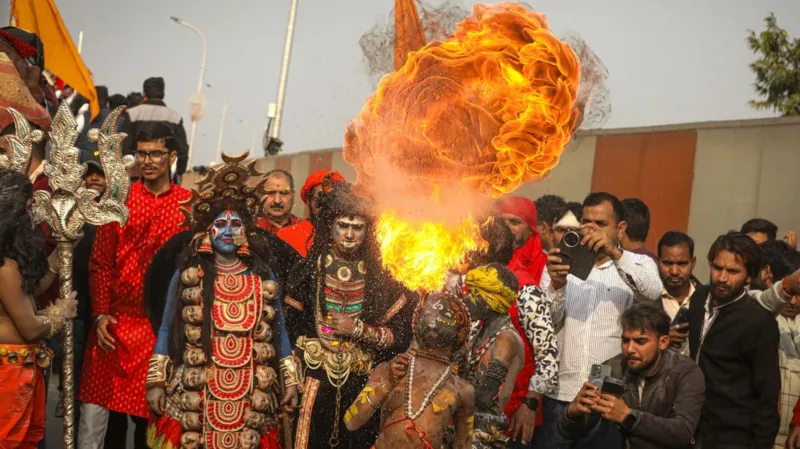
Millions of people are gathering in the northern Indian city of Prayagraj in Uttar Pradesh state to participate in the Mahakumbh Mela, the world’s largest gathering of humanity.
Devout Hindus from all parts of the world have arrived here and will continue to do so over the course of six weeks to take a holy dip at Sangam – the confluence of India’s most sacred Ganges river with the Yamuna river and the mythical Saraswati.
Hindus believe taking a dip in the sacred waters cleanses people of sins.
Authorities have set up a sprawling tent city spread across 4,000 hectares of open land along the banks of the rivers to accommodate the visitors, who are arriving at the grounds in colourful large processions, singing and dancing along the way.
Photojournalist Ankit Srinivas brings you some sights from the festival:

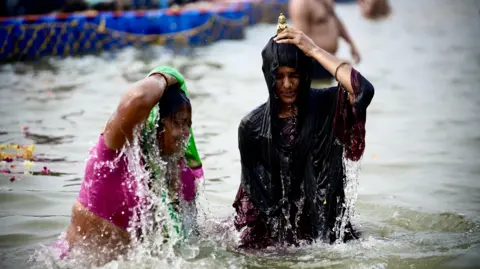
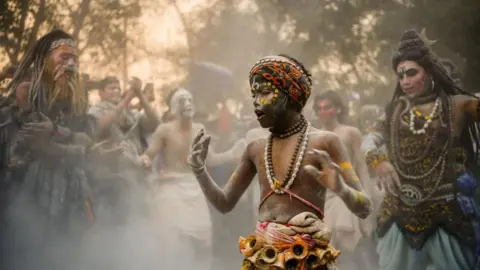
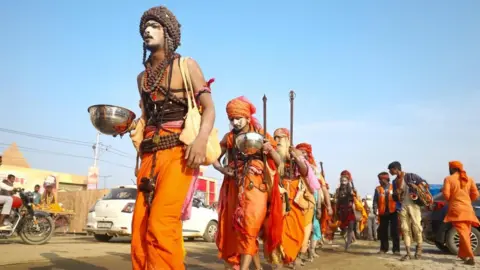
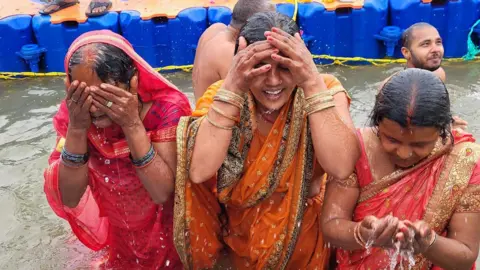
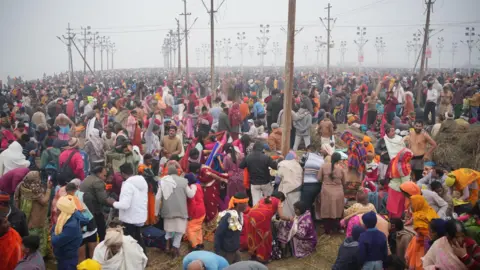
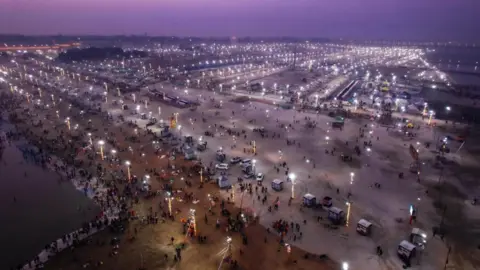
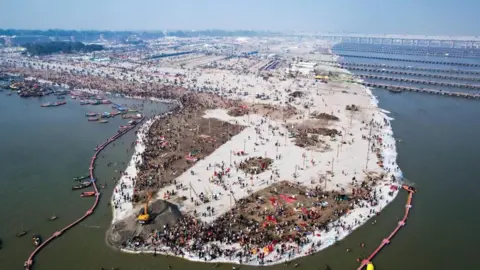
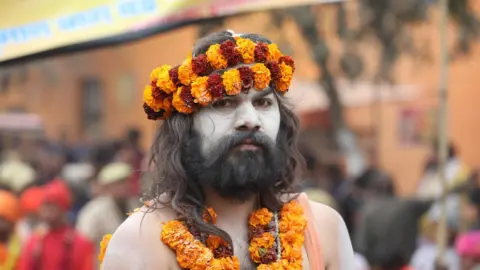
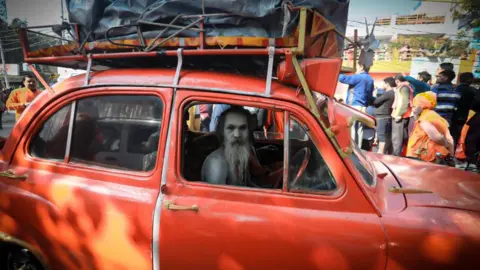
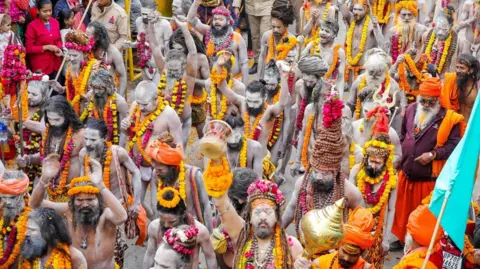
[BBC]
Features
State mechanisms need to fit in with new government’s ethos
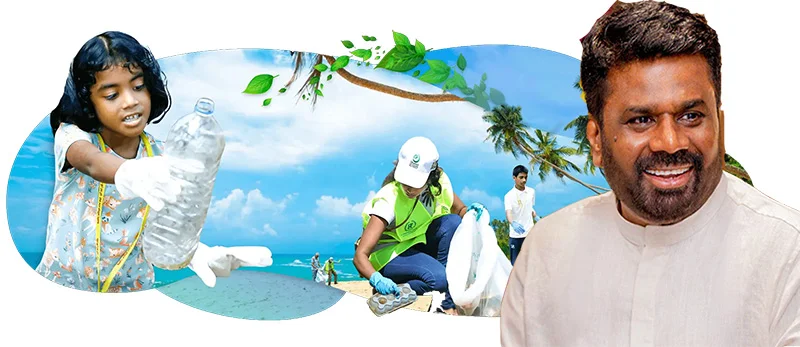
by Jehan Perera
The government has two sets of problems coming from the past, one external to it and the other internal, but both interconnected. The external problems include the vulnerable state of the economy which is on the mend by any objective standard. But the government is liable to face growing public disenchantment unless the benefits of development are more widely distributed. However, the last government’s negotiations with international creditors and the agreement with the IMF leave little room for the new government to manoeuvre. The reduction in the debt that was negotiated was around 20 percent overall, which is significantly less than obtained historically from similarly positioned countries. In 2020, Argentina restructured $65 billion in foreign bonds, securing a 50 percent reduction in debt payments over the next decade.
The second set of problems that are internal to the government comes from the fact that those in positions of political authority are mostly new to governance. It will take time for them to become accustomed to the complexities of decision making in complex situations as in Sri Lanka. Due to the self-interestedness and corrupt practices of those who previously held those same positions, the country reached the lowest point three years ago, which resulted in the landslide swing to those entirely new to wielding governmental power.
The problem for the new government is that it needs to face the challenge of rebooting the economy with a team that is new to governance. The unfortunate reality is that the corruption and priority given to parochial interests by the governmental decision makers of the past was accompanied by support and similar compromises by those in the state administration. This has meant that the new government leaders have felt it necessary to appoint a set of new administrators to be in charge of the government machinery. Some of them may take longer than others to learn on the job, with the result that the government machinery is not working as effectively as it could in the short term.
CLEAN LANKA
The problems that recently accompanied the Presidential Task Force for a Clean Sri Lanka and received adverse publicity may be attributed to taking on a mechanism that had its origins in an earlier initiative to deal primarily with environment related problems. According to this model the public sector is the “government or governmental institutions that provide policy directions, regulations and public services”. They are to work in partnership with the private sector which is “Business and private organisations that bring in resources, expertise and technology. They also contribute to the funding, innovation and efficiency of the partnership”. This model gave emphasis to public-private partnerships in which civil society would be the target to be “directly impacted by the partnership outcomes”.
The early initiatives of the Clean Lanka task force did not have the positive impact that was envisaged as it was non-consultative and attempted to enforce its views of the public-private partnership on target groups who felt victimised by the decisions made. The owners and drivers of private buses and trishaws who were the first targets have protested the decisions made. The environmental pollution and dangers to traffic that they were judged to be responsible for, was to them the outcome of their efforts to beautify and upgrade their modes of livelihood and which they had invested money in. The government has now agreed to a compromise where the proposed reforms have been given a time frame of three months to be implemented.
One of the initiatives of the government to deal constructively with this issue post-facto has been to invite civil society organisations to discuss the concept of the Clean Lanka task force and obtain their feedback. The government’s NGO Secretariat acted as the intermediary, inviting a select group of civil society organisations to a dialogue with the task force. This was a positive development as civil society groups have not been invited to participate in many of the government’s new initiatives. This has created an impression that the new government has been marginalising them and relying instead on the government machinery and private sector. This negative impression has been strengthened by the sudden emergence of a set of government regulations that would erode their independence.
MODIFY INTERVENTIONS
Civil society organisations are part of the system of democratic governance, particularly in filling gaps left by the public and private sectors such as in the case of marginalised groups, be they ethnic or religious minority groups, women and those from the LGBTIQ community. They also act as part of the system of checks and balances through the monitoring of abuse of power and human rights violations. The space for CSO/NGOs is constantly under threat worldwide. Their actions are often not appreciated by those in power who find civic groups to be inconvenient and troublesome to them.
CSOs in Sri Lanka have faced multiple attempts to restrict their independence for a variety of reasons. During the period of the war, some of them were accused of supporting the LTTE or undermining the government’s war effort. During the immediate post-war period they were accused of trying to revive the spirit of rebellion in the Tamil people and making the government vulnerable to international sanctions by supporting human rights initiatives. At the present time, there are claims that NGOs pose a threat to international law by engaging in criminal money laundering. A new set of NGO regulations have suddenly emerged to subject them to government control.
Discussions with government leaders, however, presents a more nuanced picture of reality. The government position on CSOs has not been formally conveyed but it is reported that President Anura Kumara Dissanayake has expressed his desire for an NGO-friendly government position. These positive sentiments and intentions will take some time to manifest themselves as the new government leaders and administrators become more familiar with the issues and apply their values and principles to administer the country. In the meantime, interventions coming from the past may need to be altered and modified like the directions of the task force on a clean Sri Lanka to fit in with the values and principles of the new government.
Features
Backstreet Boys’ Nick Carter to perform in Colombo!
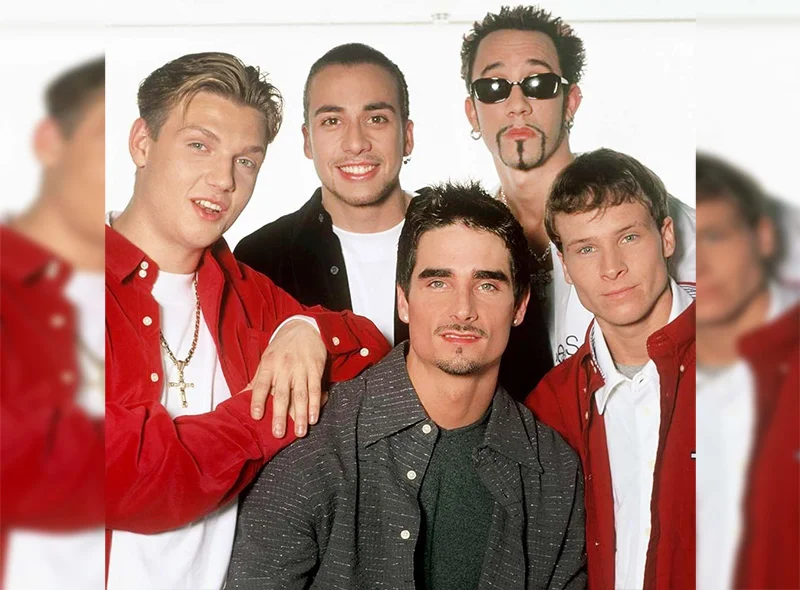
 Of late, we have had some internationally known acts, of a few decades ago, do their thing in Colombo. The most recent were the Gypsy Kings.
Of late, we have had some internationally known acts, of a few decades ago, do their thing in Colombo. The most recent were the Gypsy Kings.
Wonder if the present generation, or, let’s say, teeny-boppers, have heard of the Backstreet Boys!
In the good ole days, in the ’90s, they were considered one of the most successful boy bands in history, and had a huge following in Sri Lanka, as well.
Formed in 1993, the band members were AJ McLean, Howie Dorough, Nick Carter, Kevin Richardson, and Brian Littrell.
The girls here went gaga over Nick Carter and, I believe, he still has a huge following in our scene.
Well, the good news is that although the Backstreet Boys are no more, as a group, Nick Carter is still on the move and is scheduled to perform, right here, in Sri Lanka, in March.

Ed Sheeran: In action, in Abu Dhabi, on 26th April, 2025
The date mentioned is 23rd March, 2025, and the venue Waters Edge, Battraramulla.
His ‘Who I Am Tour’ will see him do concerts in several countries, including the UAE, India, Thailand, Qatar, Malaysia, China, Japan, Singapore, and the Philippines.
Some of the concerts Nick did last year received excellent reviews, and this is what fans, who had the privilege of seeing him in action, had to say:
* I attended this show, with a VIP upgrade, and it was amazing! Nick was so kind and sweet. The VIP allowed me to attend sound check and then a Q & A. After that, VIP holders got to meet and take a picture with him. Once the show started, the screams were deafening! Nick was amazing and absolutely rocked the entire show! The entire experience was very memorable!
* The energy Nick brings on his shows is amazing! He really loves his fans and has a super line up of songs. The different costume changes are also superb. Nick was unwell that day but he performed and put out a fabulous show! Great energy all around!

Nick Carter: ‘Who Am I Tour’ concert on 23rd March
* Nick’s concert was amazing! I was literally singing and dancing with all the music he played the whole time! His voice is so good! I could listen to him all day long! So talented. I have been a fan since ’99 and it took me 25 years to finally meet him! He was so nice and caring to his fans. He treats everyone like his friends and family. I wish Nick to have an amazing long, long career! He deserves everything! I love you always and forever, Nick! See you on your next tour!
The Backstreet Boys hits include ‘Don’t Go Breaking My Heart,’ ‘I Want It That Way,’ ‘As Long As You Love Me,’ ‘Quit Playing Games With My Heart,’ ‘Larger Than Life,’ and ‘Get Down.’
Yes, there were plans to host an Ed Sheeran concert, in Colombo, in January, this year, but nothing materialized.
However, Sri Lankans are being given an opportunity to see Ed Sheeran, of ‘Perfect’ fame, in action, in Abu Dhabi, on 26th April, 2025.
The only worry, at this point in time, I would say, is the HMPV virus which is reported to be spreading in China and has cropped up in Malaysia, and India, as well.
-

 Midweek Review7 days ago
Midweek Review7 days agoUnfolding AKD security strategy
-
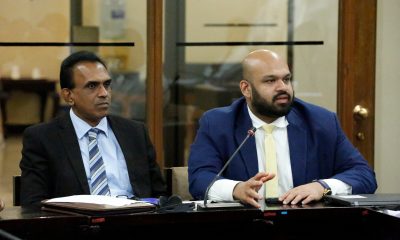
 Latest News5 days ago
Latest News5 days agoMembers of Parliament Prof. Chrishantha Abeysena and Shanakiyan Rasamanickam elected as Co-Chairs of the Parliamentary Caucus for Open Parliament Initiative
-
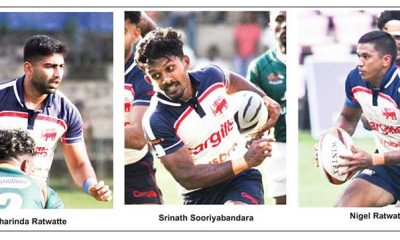
 Sports7 days ago
Sports7 days agoZumri steps onto a field of rugby magicians
-
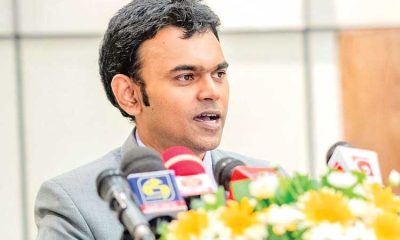
 Business7 days ago
Business7 days ago‘Unbundling’ of electricity sector to figure in sweeping energy reforms
-

 Editorial7 days ago
Editorial7 days agoRice, rhetoric and red herrings
-
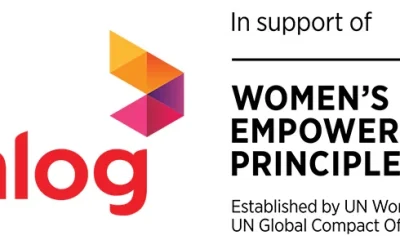
 Business6 days ago
Business6 days agoDialog becomes a signatory of UN Women’s Empowerment Principles
-

 Midweek Review7 days ago
Midweek Review7 days agoCulture shift; research for people’s benefit
-
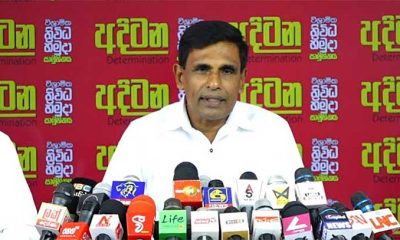
 News7 days ago
News7 days agoEaster Sunday carnage: Govt. claims emergence of fresh evidence












